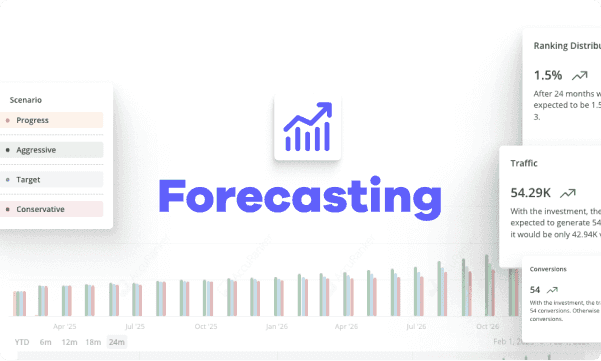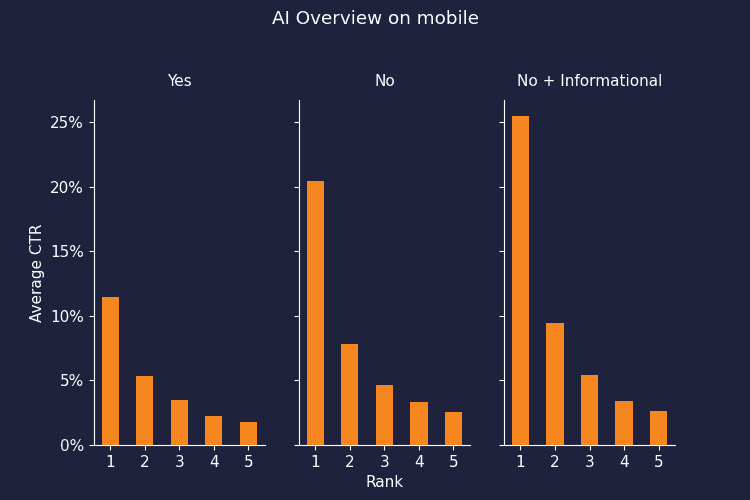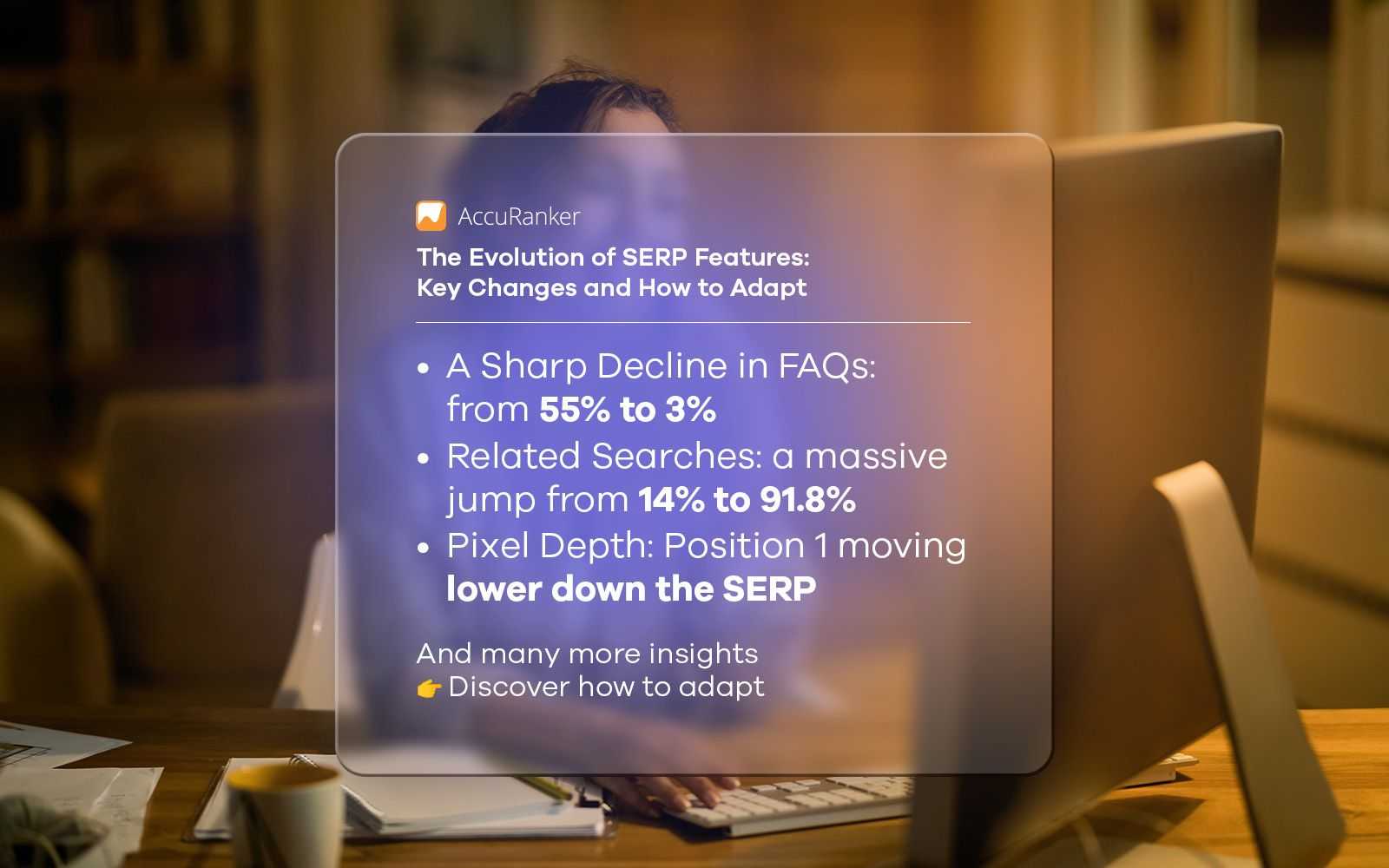How to use ChatGPT for On-Page SEO Optimization (Data-Driven Insights)
Last updated on Tuesday, December 5, 2023

ChatGPT has made waves with its ability to generate human-like text, but can it improve on-page SEO? On-page SEO optimization is crucial for higher search rankings. In this guide, I'll provide tips to optimize titles, content, outlines, and prompts using ChatGPT's capabilities. Read on to deep dive into best practices of using ChatGPT for on-page SEO
Step-by-Step Guide of Using ChatGPT for On-Page SEO Optimization
Step 1: Keyword Research for the Topic

Keyword research helps match the search intent of the target audience. Ahrefs can be used to find relevant keywords, analyze their difficulty, volume, and competition, and discover related terms and phrases.
Now, we can use ChatGPT for the keyword research for our topics. Use prompts like, “Pretend that you are an on-page SEO specialist having accurate and detailed information about available keywords. You are capable of developing a full SEO content plan.
Create a table with a list of keywords for an on-page SEO plan for [Topic Name].”
Or Generate X keywords for “Seed Keyword”
Or Classify the following keywords based on search intent in a table with the first column for keyword and the second for search intent
Keywords can help rank an article on the first page of SERPs as ranking on the first page of SERPs is necessary. According to a HubSpot study, 75% of searchers don't go past the first page of results.
Step 2: Creating an Outline for the Article
Use the below prompts to create an outline for the article.
Create an article outline for [Topic Name]. Make it concise, yet ensure no information is left out.

Or You are a specialist Content Writer working for a distinguished magazine. I want you to write an article outline for [Topic Name], ensure it has H2s and H3s as pointers, and include the introduction and conclusion as mandatory headings.

Creating a content outline eases targeting chosen keywords. For instance, surveys show that 93% of customers read reviews before making purchases, so include user reviews. Structure the content with appropriate headings and subheadings (H1, H2, H3. Normal text)
Step 3: Refine and Edit
Review ChatGPT's output and check for relevance, accuracy, optimization, grammar, spelling, punctuation, etc.
Use tools like Grammarly or Hemingway for proofreading and editing your content.
Step 4: Final Optimization
Insert focus keywords in strategic places such as title tags, meta descriptions, image alt texts, etc. Also, include a primary keyword and a compelling value proposition in the title tag, a concise content summary, and a call-to-action in the meta description.
Prompt Writing for On-page SEO
We can use ChatGPT for many things while writing an article, like refining the tone of a write-up, using unique vocabulary, rewriting sentences or paragraphs, brainstorming new ideas, or generating hook suggestions for articles.
To refine a write-up's tone, use a prompt like, “Make this article more persuasive for …….”
Or “reset the tone of the below text to formal and optimistic”.
For using unique vocabulary, use a prompt like, “Give me a few synonyms/antonyms for…..”
Or “suggest 10 new and different words I can use instead of ……”.
To rewrite sentences or paragraphs, enter the below prompt in ChatGPT.
“Rewrite the above sentence/paragraph and make it more concise & engaging”.
If you want to use ChatGPT to give new ideas, you can use prompts like-
“List some new ideas on to write a text as a subsection for the heading ………”
Or “Suggest the strategy to make the below write-up more engaging for SERPs”.
Tips for Using ChatGPT for On-Page SEO
Use Conversational Prompts for Natural Phrasing
When providing prompts to ChatGPT, use natural, conversational language. This results in content that sounds human-written, with good flow and clarity. Ask questions, provide context, and give examples to guide ChatGPT to generate optimized copy in its own words.
For example, instead of giving ChatGPT a generic prompt like "Write an introduction paragraph for an article about SEO," try giving it a more specific and conversational prompt like:
Imagine you are talking to a beginner who wants to learn about SEO. Write an introduction paragraph that explains what SEO is, why it is important, and what they will learn from reading your article.
Avoid Over-Optimizing—Focus on Intent and Quality
Overdoing the optimization of content sacrifices the quality and readability of content.
Always Fact-Check the Content for Accuracy
Replace any incorrect information with accurate data from reliable sources. Per a Bright Edge study, pages with inaccurate content see an average 59% decline in organic traffic.
Balance Keywords and Readability
To balance the content, one should use synonyms, variations, modifiers, and long-tail keywords related to the main keyword but sound more natural and conversational. For example, instead of writing "how to make money online fast" multiple times, try writing "how to earn cash on the internet quickly," "how to generate income online in no time," "how to get paid online fast," etc.
Update Old Underperforming Content
Leverage ChatGPT to refresh existing content that has poor traffic and conversion rates. Modernize it with new information, examples, and statistics. This provides fresh value for search engines and users.
To identify underperforming content, use Ahrefs to analyze the website's traffic, engagement, conversions, etc.
Update the underperforming content by using ChatGPT and make it more relevant and valuable to your audience. Ask ChatGPT to:
Add new information, stats, examples, etc., reflecting current situations and trends.
Rewrite or rephrase the content to make it more engaging and persuasive.
Optimize the content for new or updated keywords and ranking factors.
Add new visual elements like images, videos, graphs, etc., to make the content more appealing.
Generate Localized Versions for Different Markets
ChatGPT can rapidly create localized content tailored to different target countries and languages. Provide region-specific guidelines and keywords. Localization boosts engagement as it connects more culturally.
Translate your content into the local language, use the local currency and units of measurement, address the local culture and customs, etc.
For example, if anyone wants to target the French market with their content about SEO, they can ask ChatGPT to:
Translate their content from English to French using its natural language processing capabilities.
Use the euro (€) as the currency and the metric system as the units of measurement.
Include examples and references that are relevant and familiar to the French audience.
Use a formal tone and style that suits the French culture and etiquette.
Create Different Variations of Title/Meta for A/B Testing
Have ChatGPT generate multiple versions of titles and meta descriptions for each piece of content. Research by HubSpot found that A/B testing titles can improve CTR by up to 14%.
To create different variations of title tags and meta descriptions using ChatGPT, give it a prompt like:
Write three variations of title tags and meta descriptions for an article about "Tips for Using ChatGPT for On-Page SEO."
The title tags should be no longer than 60 characters and include the primary keyword "ChatGPT for SEO."
The meta descriptions should be no longer than 160 characters and contain a summary of the article and a call to action.
ChatGPT may generate something like:
Variation 1: Title tag: How to Use ChatGPT for SEO: Best Practices and Tips, Meta description: Learn how to use ChatGPT for SEO effectively with these best practices and tips. Find out how ChatGPT can help you with keyword research, content creation, optimization, and more.
Variation 2: Title tag: ChatGPT for SEO: A Complete Guide with Tips and Tricks, Meta description: Discover how ChatGPT can help you with various aspects of on-page SEO in this complete guide. Get tips and tricks on how to use ChatGPT for keyword research, content creation, optimization, and more.
Variation 3: Title tag: The Ultimate Guide to Using ChatGPT for On-Page SEO, Meta Description: Want to know how to use ChatGPT for on-page SEO? This ultimate guide will show you how. Learn how ChatGPT can help you with keyword research, content creation, optimization, and more.
Automate Large Scale Content Creation Through APIs
If you want to create blog posts using ChatGPT, use APIs to Connect ChatGPT with WordPress or other CMS platforms.
Tools to Use Alongside ChatGPT for an All-Rounded Approach
ContentDetector.AI
This platform helps detect and analyze the AI-generated parts of your content, ensuring you're always delivering the best to your audience. By leveraging advanced algorithms and intricate detection methodologies, AI Detector ensures you're always aware of the nature of the content you're dealing with.
Ahrefs
Use Ahrefs to determine how sites and competitors' sites perform regarding organic traffic, keywords, and ranking factors. Use Ahrefs to discover new keyword opportunities, analyze content gaps, and monitor SEO progress.
Google Bard, Claude, HarpaAI
These are three conversational AI chatbots similar to ChatGPT but with different features and capabilities. Google Bard is another prominent player in this space with growing user base that will allow users to have natural and open-ended conversations. Claude can handle long documents and generate content and code with high accuracy. HarpaAI can help create voice-friendly content and optimize it for devices like Google Home and Amazon Alexa.
Answer the Public
Answer the publictool provides data like search popularity, volume, and predicted cost-per-click.
ChatWithPDF.AI
ChatWithPDF tool helps read the content within PDFs, converting static, unindexable content into dynamic, searchable, and indexable formats, which are favored by search engines.
Neuron Writer
While ChatGPT generates the raw drafts, Neuron Writer can refine and sharpen the content like a virtual co-writer.
Benefits of Using ChatGPT for On-Page SEO
ChatGPT can craft On-page SEO tags and meta descriptions that are a quick pitch to potential readers scrolling through search results.
ChatGPT can generate articles where the targeted keywords appear naturally and contextually. It is a seamless integration that helps articles rise in the search rankings.
ChatGPT can write in a conversational and friendly tone, use humor and emotions, and ask questions to involve the readers.
ChatGPT can help you write and optimize content faster and more efficiently. They can also edit and customize the content or ask ChatGPT to rewrite or improve it.
ChatGPT can generate content for different platforms, such as blogs, social media, newsletters, etc. One can also use ChatGPT to generate content in other formats, such as text, audio, and video, and different languages, such as English, Español, Français, Deutsche, etc.
Limitations of Using ChatGPT for On-Page SEO
ChatGPT can produce incorrect information in its written content. Always double-check the information it generates.
ChatGPT lacks the deeper contextual, conceptual, and analytical understanding of content topics that humans have. We need to provide additional background and clarification in prompts to get better results.
ChatGPT can write faster and easier but cannot replace human editing. While it can generate complete articles, its content always requires careful human reviewing, editing, and fine-tuning before publishing.
Depending too much on ChatGPT, Google may penalize your site for duplicate or thin content, hurting rankings as they may consider it low-quality or spammy.
ChatGPT performs best when "trained" over multiple interactions through the feedback on its results. As a beginner, take the time to rate outputs, correct mistakes, and refine prompts so the AI progressively improves.
Conclusion
In wrapping up, ChatGPT is a valuable asset for on-page SEO optimization. From crafting attention-grabbing tags and meta descriptions to seamlessly incorporating keywords and generating engaging content, it's got a lot going for it. However, it's crucial to remember that the tool is most effective when paired with human oversight. Always double-check for accuracy, make adjustments for nuance, and ensure your content is unique to avoid search engine penalties. As technology advances, ChatGPT's capabilities are likely to evolve, further amplifying its utility in the ever-changing landscape of SEO. ChatGPT can be a robust tool in your SEO arsenal when used wisely.
As ChatGPT continues evolving, its capabilities for businesses and SEO will grow exponentially. For now, view ChatGPT as a productivity booster that, combined with human creativity and strategy, can take on-page SEO to the next level, driving traffic and conversions.
FAQs
How do I use ChatGPT responsibly for SEO?
Use ChatGPT ethically by customizing its outputs, avoiding plagiarism, and ensuring you do not over-optimize or create thin content to rank keywords. Follow SEO best practices and focus on creating high-quality content.
What is the best way to use ChatGPT for SEO?
The best way is to utilize ChatGPT to generate content drafts and outlines optimized for researched keywords, then have a human review, refine, and edit the content before publishing.
Does ChatGPT replace an SEO expert?
ChatGPT does not replace human SEO expertise and judgment but is an AI assistant to help automate and scale content production optimally.

Article by:
Aksara
Content Editor at Accuranker
I'm Aksara, your go-to content editor at AccuRanker.com. By day, I'm all about fine-tuning content for search engines. But when the workday's done, I switch gears – I'm a blogger, SEO enthusiast, and a dedicated gamer. I bring a creative touch to SEO and make sure your content stands out.


